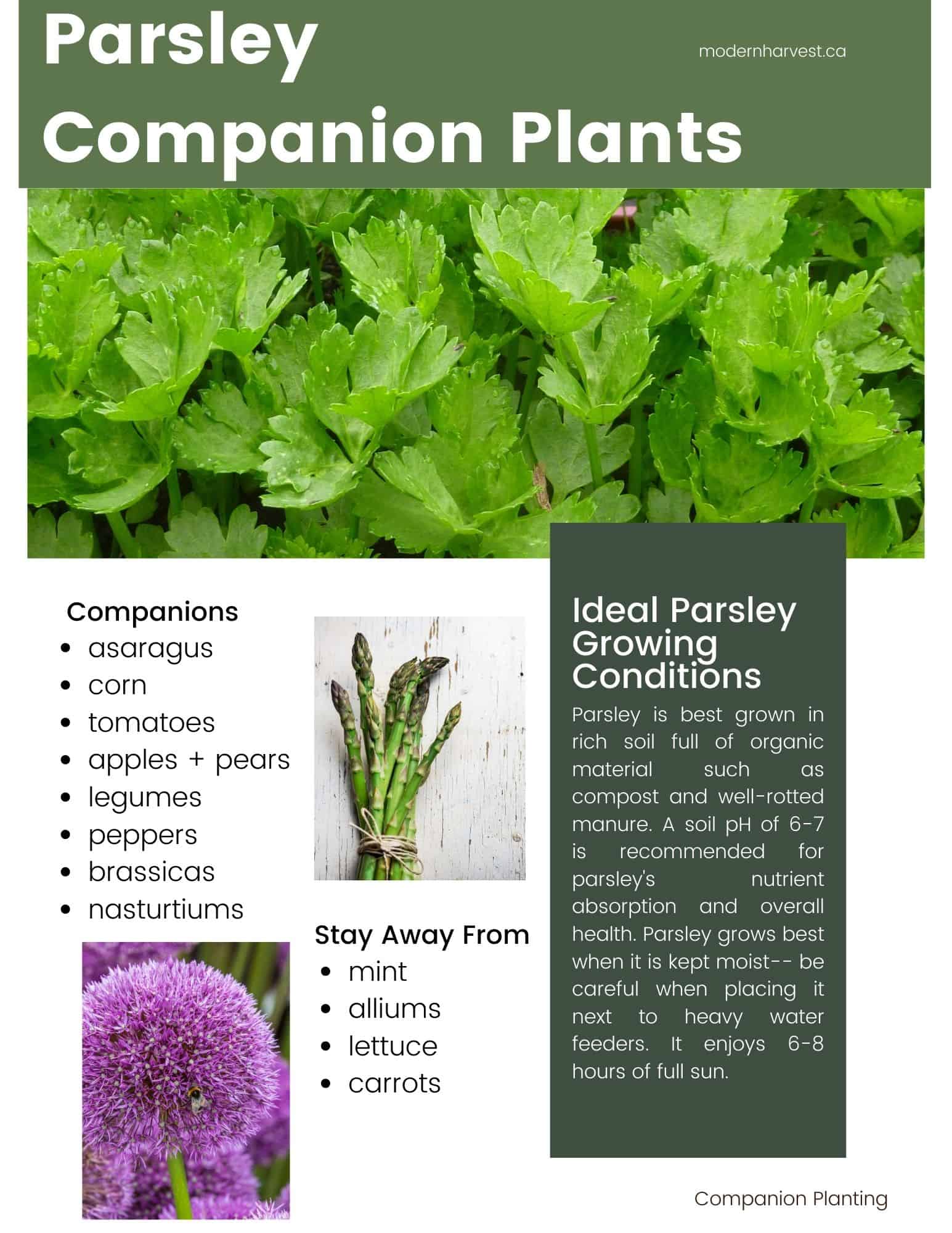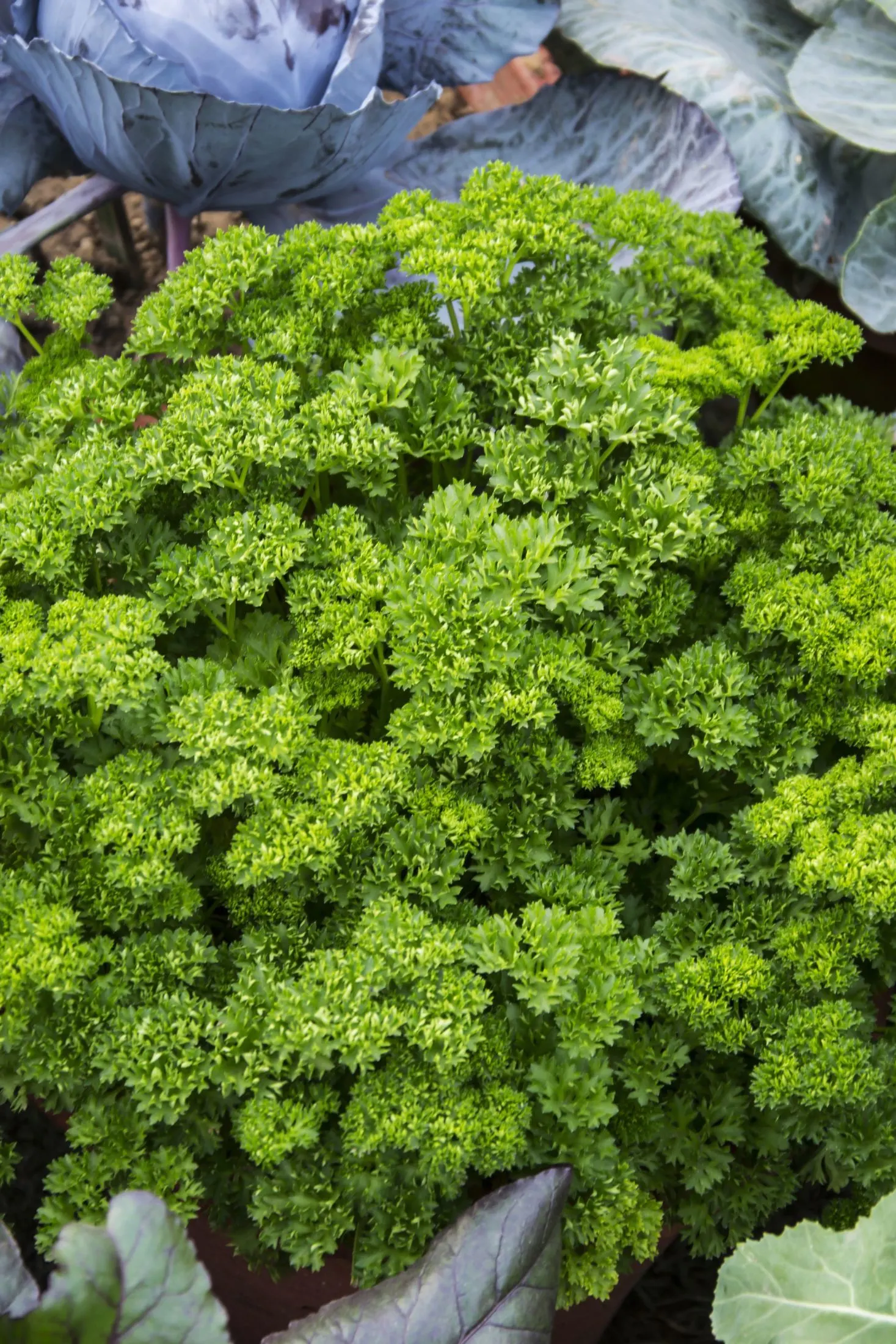The Perfect Pair: Parsley And Basil Companion Planting
The Perfect Pair: Parsley and Basil Companion Planting
Parsley and basil are two of the most popular herbs in the world, and for good reason. They're both delicious, versatile, and easy to grow. But did you know that these two herbs also make great companions in the garden?
In this blog post, we'll explore the benefits of companion planting parsley and basil, and give you some tips on how to do it successfully.
Why Companion Plant Parsley and Basil?
There are several reasons why companion planting parsley and basil is a good idea. First, these two herbs have complementary flavors. Parsley's fresh, bright flavor helps to balance out basil's more pungent taste. This makes them a great combination for use in salads, sauces, and other dishes.
Second, parsley and basil can help to repel pests. Parsley attracts beneficial insects, such as ladybugs and hoverflies, which help to control pests like aphids and spider mites. Basil also has insect-repelling properties. It's been shown to deter whiteflies, mosquitoes, and other pests.
Third, parsley and basil can help to improve the growth of each other. Parsley's roots release nitrogen into the soil, which can help to fertilize basil plants. Basil, on the other hand, can help to deter pests that can damage parsley plants.
How to Companion Plant Parsley and Basil
To companion plant parsley and basil, you'll need to plant them close together. A good rule of thumb is to plant them about 8 inches apart. You can plant them in a pot, in the ground, or in a raised bed.
When planting parsley and basil, make sure that they get full sun. They also need well-draining soil. Water them regularly, but don't overwater them.
Tips for Companion Planting Parsley and Basil
- For best results, plant parsley and basil in the same bed as tomatoes, peppers, or eggplants. These plants benefit from the insect-repelling properties of parsley and basil.
- Avoid planting parsley and basil near beans or peas. These plants can compete with parsley and basil for nutrients.
- If you're planting parsley and basil in a pot, choose a pot that's at least 12 inches in diameter. This will give the plants enough room to grow.
Conclusion
Companion planting parsley and basil is a great way to improve the flavor, growth, and pest resistance of your herbs. By following these simple tips, you can enjoy the benefits of these two delicious and versatile herbs for years to come.
Parsley and basil are two of the most popular herbs in the garden, and for good reason. They're both delicious, versatile, and easy to grow. But did you know that they're also great companion plants? That means that they can help each other thrive when they're planted together.
For example, parsley can help to repel pests that can damage basil plants, such as aphids and spider mites. Basil, on the other hand, can help to improve the flavor of parsley.
If you're looking to grow parsley and basil together, there are a few things to keep in mind. First, make sure that they're planted in full sun. They also need well-draining soil and consistent moisture.
Once you've planted your parsley and basil, you'll need to water them regularly and fertilize them every few weeks. With a little care, you'll be enjoying fresh, flavorful parsley and basil all season long.
For more information about parsley and basil companion planting, be sure to visit Gardenia Inspiration.
FAQ of parsley and basil companion plants
1. What are good companion plants for parsley and basil?
Parsley and basil are both herbs that are easy to grow and can be used in a variety of dishes. They are also both beneficial companion plants, meaning that they can help to improve the growth and health of each other. Some of the best companion plants for parsley and basil include:
- Marigolds: Marigolds help to repel pests, such as aphids and spider mites.
- Potatoes: Potatoes provide nutrients that parsley and basil need to thrive.
- Cilantro: Cilantro helps to repel pests, such as whiteflies and mealybugs.
- Root vegetables: Root vegetables help to improve the drainage of the soil, which is beneficial for parsley and basil.
- Borage: Borage attracts pollinators, which helps to increase the yield of parsley and basil.
- Oregano: Oregano helps to repel pests, such as mosquitoes and flies.
2. What are some plants that should not be planted near parsley and basil?
There are a few plants that should not be planted near parsley and basil, as they can compete for nutrients or attract pests. These plants include:
- Tomatoes: Tomatoes can stunt the growth of parsley and basil.
- Cucumbers: Cucumbers can attract pests, such as cucumber beetles.
- Eggplant: Eggplant can attract pests, such as aphids and whiteflies.
- Melons: Melons can attract pests, such as squash bugs and cucumber beetles.
3. How do I plant parsley and basil together?
Parsley and basil can be planted together in a garden bed or in a container. When planting them together, it is important to space them out so that they have enough room to grow. Parsley should be planted about 6 inches apart, and basil should be planted about 12 inches apart.
4. How do I care for parsley and basil?
Parsley and basil are both relatively easy to care for. They need full sun and well-drained soil. They should be watered regularly, but the soil should not be soggy.
5. How do I harvest parsley and basil?
Parsley and basil can be harvested when they are young and tender. To harvest parsley, simply snip the leaves from the top of the plant. To harvest basil, cut the stems about 1 inch above the soil.
Image of parsley and basil companion plants
5 different images of "parsley and basil companion plants" from Pinterest:
- Image 1: Parsley and tomatoes. Parsley is a good companion plant for tomatoes because it helps to repel pests such as tomato hornworms and whiteflies.
- Image 2: Parsley and carrots. Parsley helps to improve the flavor of carrots and can also help to deter pests.

- Image 3: Parsley and beans. Parsley helps to improve the nitrogen content of the soil, which is beneficial for beans.

- Image 4: Basil and tomatoes. Basil is a good companion plant for tomatoes because it helps to repel pests such as mosquitoes and aphids.
- Image 5: Basil and peppers. Basil helps to improve the flavor of peppers and can also help to deter pests.

Post a Comment for "The Perfect Pair: Parsley And Basil Companion Planting"